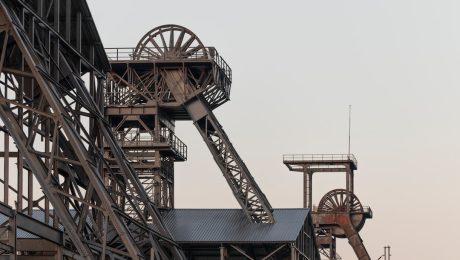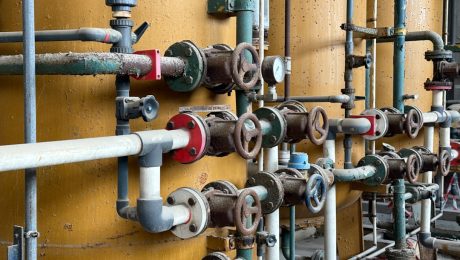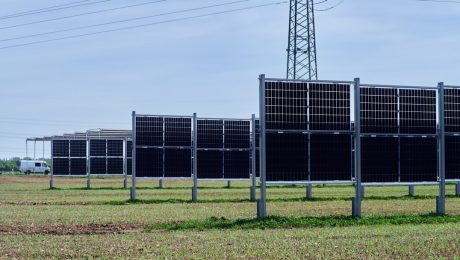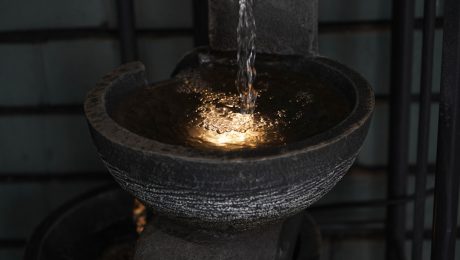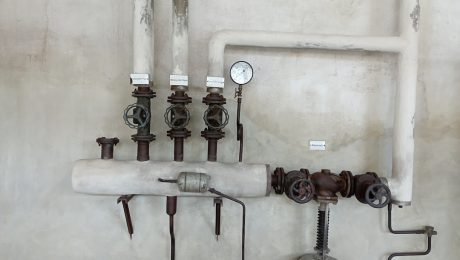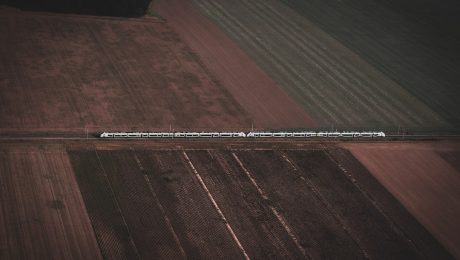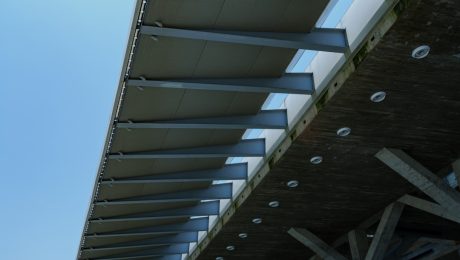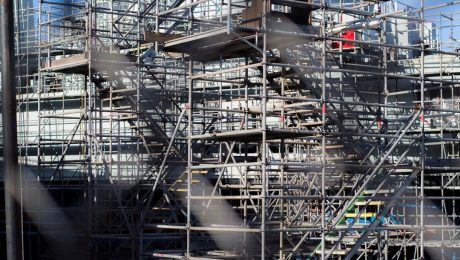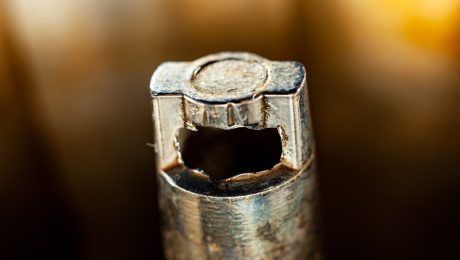body { font-family: sans-serif; line-height: 1.6; }
h1, h2, h3 { color: #333; }
h1 { font-size: 2em; }
h2 { font-size: 1.5em; }
h3 { font-size: 1.2em; }
The steel market, a cornerstone of global infrastructure and manufacturing, presents businesses with a critical decision: should they secure steel through spot purchases or commit to long-term contracts? This decision hinges on a complex interplay of market volatility, production needs, risk tolerance, and financial forecasting. This comprehensive guide will dissect the advantages and disadvantages of both strategies, empowering you to make an informed choice for your business.
Understanding Spot Steel Contracts
Spot steel contracts involve buying steel on the open market at the prevailing price. This approach offers flexibility and responsiveness to immediate needs. You purchase the steel when you need it, avoiding the commitment and potential risk associated with long-term agreements. However, this flexibility comes at a price: price volatility. Spot prices fluctuate based on supply, demand, global events, and raw material costs. A sudden surge in demand or a disruption in the supply chain can lead to significant price increases, impacting your project budgets and profitability. This makes spot purchases ideal for businesses with fluctuating demand or those comfortable with higher price risk.
The Advantages of Spot Purchasing
The primary advantage of spot purchasing is its inherent flexibility. Businesses can adapt to changes in their production schedules and demand without being locked into a pre-determined quantity. Moreover, in a buyer’s market, spot purchases can offer access to lower prices compared to long-term contracts.
The Disadvantages of Spot Purchasing
The major disadvantage is price volatility. Unpredictable price swings can dramatically affect profitability. Furthermore, securing sufficient quantities of steel can be challenging during periods of high demand, potentially leading to production delays and missed deadlines. The administrative burden of constantly sourcing and negotiating individual purchases can also be significant.
Exploring Long-Term Steel Contracts
Long-term steel contracts offer a different approach. These agreements typically involve a fixed price or a price indexed to a benchmark, guaranteeing a consistent supply of steel over a defined period. This predictability provides businesses with greater financial stability and allows for better planning and budgeting. However, this stability comes at the cost of flexibility. Businesses are committed to purchasing a specific quantity of steel at pre-agreed terms, regardless of market fluctuations. This can be advantageous in stable markets but disadvantageous in volatile ones.
The Advantages of Long-Term Contracts
The primary benefit is price certainty. Businesses know their steel costs upfront, facilitating accurate budgeting and financial forecasting. Long-term contracts also secure a consistent supply of steel, minimizing the risk of production disruptions due to supply chain issues. Furthermore, they often provide access to preferential pricing and potentially better payment terms.
The Disadvantages of Long-Term Contracts
The main drawback is the lack of flexibility. Should market prices fall significantly below the contract price, businesses are locked into a less favorable arrangement. Similarly, if demand decreases unexpectedly, businesses may be stuck with surplus inventory. Negotiating favorable long-term contracts requires significant market knowledge and expertise, and entering into such agreements commits your business for a prolonged period.
Hedging Risk: A Crucial Consideration
Regardless of whether you choose spot or long-term contracts, hedging strategies can significantly mitigate risk. Hedging involves using financial instruments, such as futures contracts or options, to protect against adverse price movements. For example, a business relying on spot purchases might use futures contracts to lock in a future price, mitigating the risk of price increases. Similarly, businesses with long-term contracts might use options to protect against unexpected price drops.
Factors Influencing Your Choice
The optimal choice between spot and long-term steel contracts depends on several factors specific to your business. These include your production volume, the stability of your demand, your risk tolerance, your financial resources, and the current market conditions. A comprehensive assessment of these factors is essential before making a decision.
Making the Right Choice for Your Business
Ultimately, the best strategy—spot or long-term—depends on your unique circumstances. Businesses with consistent, high-volume demand and a low risk tolerance often favor long-term contracts for price stability and supply security. Conversely, businesses with fluctuating demand or a higher risk tolerance may find spot purchases more advantageous due to their flexibility. A thorough market analysis, combined with careful consideration of your business’s specific needs and risk profile, is crucial for making the most informed decision.
Consider consulting with steel market experts or financial advisors to further refine your strategy and optimize your purchasing decisions.
Tags: steel contracts, spot steel, long-term steel contracts, steel pricing, steel market analysis
Selecting the right piping system for a chemical plant is critical for safety, efficiency, and longevity. The wrong choice can lead to leaks, corrosion, equipment failure, and even catastrophic accidents. This comprehensive guide will walk you through the key factors to consider when choosing pipes for your chemical processing facility.
1. Understanding Chemical Compatibility: The Foundation of Pipe Selection
Before considering anything else, you must thoroughly understand the chemical compatibility of the proposed pipe material with the substances it will carry. This involves reviewing the Safety Data Sheets (SDS) for each chemical and cross-referencing them with the material compatibility charts provided by pipe manufacturers. Factors to consider include:
- Chemical Composition: The specific chemical makeup of the fluid will dictate its reactivity with different pipe materials.
- Temperature: Elevated temperatures can significantly alter the reactivity of chemicals and potentially weaken the pipe material.
- Pressure: High pressure can exacerbate chemical reactions and increase the stress on the pipe, potentially leading to failure.
- Concentration: The concentration of the chemical can affect its corrosiveness.
- Presence of Impurities: Trace amounts of impurities in the chemical stream can dramatically change its behavior and compatibility.
Using specialized software or consulting with a chemical engineer experienced in material selection is highly recommended to ensure accurate compatibility assessment.
2. Pressure Ratings and Flow Requirements: Ensuring Operational Integrity
Chemical plants often operate under high pressure and flow rates. The selected pipe must withstand these conditions without compromising its structural integrity. Consider the following:
- Maximum Operating Pressure (MOP): The pipe’s pressure rating must exceed the maximum expected pressure within the system, including pressure surges.
- Design Pressure: This is a calculated value that considers factors like safety factors and potential pressure fluctuations.
- Flow Rate: The pipe’s diameter must be sufficient to handle the required flow rate without excessive pressure drop or turbulence.
- Fluid Velocity: High fluid velocities can cause erosion and increase wear on the pipe’s inner surface.
- Pipe Schedule: This refers to the pipe’s wall thickness, with higher schedules indicating thicker walls and greater pressure resistance.
Proper hydraulic calculations are crucial to determine the appropriate pipe diameter and schedule for optimal performance.
3. Corrosion Resistance: Protecting Against Degradation
Corrosion is a significant concern in chemical plants, where many fluids are corrosive. The chosen pipe material must offer sufficient resistance to prevent degradation and maintain the integrity of the system. Common materials with varying degrees of corrosion resistance include:
- Stainless Steel: Offers excellent corrosion resistance in many chemical environments, particularly austenitic grades like 304 and 316.
- Carbon Steel: Less expensive than stainless steel but more susceptible to corrosion, often requiring protective coatings or linings.
- Duplex Stainless Steel: Combines the strength of ferritic stainless steel with the corrosion resistance of austenitic stainless steel.
- PVC and CPVC: Thermoplastics suitable for certain corrosive chemicals but limited by temperature and pressure ratings.
- Fiberglass Reinforced Plastic (FRP): Highly corrosion-resistant and lightweight but may have lower pressure ratings compared to metals.
The choice of material depends on the specific corrosive chemicals present and the operating conditions.
4. Temperature Considerations: Impact on Material Properties
Temperature plays a critical role in pipe material selection. High temperatures can weaken materials, reduce their corrosion resistance, and even cause creep (slow deformation under stress). Conversely, low temperatures can make materials brittle and prone to cracking. Factors to consider include:
- Maximum Operating Temperature (MOT): The chosen pipe material must have an MOT that significantly exceeds the highest expected temperature in the system.
- Thermal Expansion: Different materials expand and contract at different rates when subjected to temperature changes. This must be accounted for in the piping design to prevent stress and potential failure.
- Cryogenic Applications: Special materials like certain stainless steels or nickel alloys are required for applications involving extremely low temperatures.
- Insulation: Proper insulation is often necessary to maintain temperature control and prevent excessive heat loss or gain.
Careful consideration of temperature fluctuations and their impact on the pipe material is essential.
5. Cost and Maintenance: Balancing Performance and Economics
While performance and safety are paramount, cost and maintenance must also be considered. The initial cost of different pipe materials varies significantly, as does their lifespan and maintenance requirements. Factors to consider include:
- Initial Material Cost: Stainless steel is generally more expensive than carbon steel.
- Installation Cost: Different pipe materials may require different installation techniques and specialized equipment.
- Maintenance Cost: Corrosion-resistant materials require less frequent maintenance and repairs.
- Lifespan: Choosing a durable material can lead to significant long-term cost savings by reducing the need for frequent replacements.
- Environmental Considerations: The environmental impact of manufacturing and disposing of different pipe materials should also be considered.
A comprehensive cost-benefit analysis should be conducted to determine the most economical and sustainable option.
Choosing the right pipe for your chemical plant is a complex process requiring careful consideration of many factors. Consulting with experienced engineers and utilizing specialized software can significantly improve the accuracy and safety of your selection process.
Tags: Chemical Plant Piping, Pipe Selection, Chemical Compatibility, Pressure Ratings, Corrosion Resistance
Harnessing the power of the sun is a fantastic step towards sustainability, but the journey doesn’t end with choosing the right solar panels. The effectiveness and longevity of your solar energy system heavily depend on a robust and reliable mounting system. This comprehensive guide explores the various types of solar mounting systems, helping you make an informed decision for your specific needs.
1. Understanding the Crucial Role of Solar Mounting Systems
Solar mounting systems are the unsung heroes of solar energy. They are the structural backbone that securely holds your solar panels in place, ensuring optimal sunlight exposure and protecting them from harsh weather conditions. A well-designed system maximizes energy production by precisely orienting panels towards the sun throughout the day. Poorly designed or installed systems, however, can lead to reduced efficiency, panel damage, and even safety hazards. The system’s role extends beyond simple support; it also influences factors like the overall aesthetics of your property and the ease of maintenance.
2. Exploring Different Types of Solar Mounting Systems
The choice of mounting system depends on several factors, including roof type, ground conditions, and the size of your solar array. The most common types include:
- Roof Mounted Systems: These are the most prevalent type, suitable for residential and commercial buildings. They further subdivide into:
- Tile Roof Mounts: Designed to seamlessly integrate with tile roofs, these systems use clamps or hooks to secure panels without causing significant damage to the roof tiles.
- Shingle Roof Mounts: Similar to tile roof mounts, but specifically designed for asphalt shingle roofs. They often utilize flashing to create a watertight seal.
- Metal Roof Mounts: These systems utilize clamps or brackets that securely attach to metal roofing materials like standing seam or corrugated metal.
- Flat Roof Mounts: Ideal for flat roofs, these systems often involve ballast (weight) or penetration methods to secure the panels.
- Ground Mounted Systems: These systems are ideal for large-scale solar farms or situations where roof mounting isn’t feasible. They typically involve sturdy ground posts or racks that support the solar panels at an optimal angle.
- Pole Mounted Systems: These systems are often used in areas with limited ground space or for smaller installations. They involve mounting the panels on a single or multiple poles.
- Carport Mounted Systems: These systems offer a practical solution for integrating solar panels into existing carports or creating new solar-powered carports. They provide shade and clean energy.
3. Key Factors to Consider When Choosing a Solar Mounting System
Selecting the right mounting system requires careful consideration of several factors:
- Roof Type and Condition: Your roof’s structure, material, and condition significantly influence the suitability of different mounting systems. A structural engineer’s assessment might be necessary for complex roof designs.
- Panel Size and Weight: The mounting system must be robust enough to withstand the weight of the solar panels, especially in high-wind or snow-prone areas.
- Local Building Codes and Regulations: Compliance with local building codes and regulations is crucial to ensure safety and legal compliance.
- Environmental Factors: Factors like wind speed, snowfall, and temperature extremes impact the design and durability of the mounting system.
- Aesthetics: While functionality is paramount, the aesthetic appeal of the mounting system can also be a significant consideration.
- Budget: Different mounting systems vary in cost, so budgeting is essential for selecting a suitable and affordable option.
4. Installation and Maintenance of Solar Mounting Systems
Professional installation is highly recommended for solar mounting systems. Improper installation can compromise safety and efficiency. Experienced installers possess the knowledge and tools to ensure a secure and optimized system. The installation process typically involves:
- Site Assessment: A thorough assessment of the location, roof condition, and environmental factors.
- System Design: Creating a detailed design that optimizes sunlight exposure and complies with building codes.
- Component Installation: Securely mounting the racking system, attaching the solar panels, and ensuring proper grounding.
- System Testing and Commissioning: Thorough testing to ensure the system’s functionality and safety.
Regular maintenance, including visual inspections for loose components or damage, is essential to prolong the lifespan of your solar mounting system. Addressing any issues promptly can prevent more significant problems down the line.
5. DIY vs. Professional Solar Mounting Installation
While some individuals may consider DIY installation, it’s generally recommended to engage a professional installer for several reasons:
- Safety: Working at heights and with electrical components requires specialized training and safety precautions.
- Warranty: Professional installers often offer warranties on their work, providing peace of mind.
- Efficiency: Professionals have the experience and tools to complete the installation efficiently and accurately.
- Compliance: Professionals ensure compliance with building codes and regulations, avoiding potential legal issues.
- Optimized Performance: Proper installation maximizes the energy output of your solar panel system.
While DIY kits are available, they are best suited for smaller, simpler projects and require a good understanding of electrical work and structural engineering.
Choosing the right solar mounting system is a crucial decision that impacts the efficiency, safety, and longevity of your solar energy investment. By understanding the various options and factors involved, you can make an informed choice that optimizes your solar power system for years to come.
Power plants, behemoths of energy generation, rely on robust and reliable infrastructure. While the turbines and generators often steal the spotlight, a crucial, often overlooked component ensures the structural integrity and operational efficiency of these facilities: steel profiles. From the foundational structures to intricate internal components, steel profiles are the unsung heroes, providing the backbone for safe and efficient power generation. This post delves into the multifaceted role of steel profiles in the construction and operation of power plants.
1. Structural Foundation: Steel Profiles as the Building Blocks
The foundation of any power plant is critical, bearing the weight of massive machinery and withstanding environmental stresses. Steel profiles, including H-beams, I-beams, and wide-flange sections, form the skeletal framework of these structures. Their high strength-to-weight ratio allows for the construction of robust yet lightweight structures, minimizing material costs and construction time. These profiles are often used in the construction of:
- Plant buildings: Housing generators, control rooms, and other essential equipment.
- Cooling towers: Supporting the massive structures responsible for cooling the plant’s water systems.
- Stacks: Providing structural integrity for the tall chimneys that release exhaust gases.
- Support structures for heavy equipment: Providing stable platforms for turbines, boilers, and other large components.
The selection of specific steel profiles depends on the load-bearing requirements, environmental conditions (corrosion resistance), and the overall design of the power plant. Detailed engineering calculations are crucial to ensure the structural integrity and longevity of these foundational elements.
2. Internal Frameworks: Precision and Efficiency with Steel
Beyond the main structure, steel profiles play a vital role in the internal frameworks of power plants. These profiles provide support for piping systems, electrical conduits, and other essential infrastructure. The precision engineering of these profiles is crucial for ensuring efficient routing of fluids and electricity, maximizing operational efficiency. Commonly used profiles include:
- C-channels and angle sections: Often used for supporting smaller piping systems and electrical conduits.
- Square and rectangular hollow sections (SHS and RHS): Providing robust support for heavier components and resisting torsional forces.
- Custom-engineered profiles: Designed to meet specific requirements of the power plant’s unique layout and equipment.
The use of standardized profiles simplifies construction and reduces costs, while custom-engineered profiles address unique design challenges and optimize space utilization within the plant.
3. Material Selection: Balancing Strength, Durability, and Cost
The choice of steel grade for power plant applications is critical. Factors to consider include strength, corrosion resistance, weldability, and cost-effectiveness. Commonly used steel grades include:
- Carbon steel: A cost-effective option for applications with low corrosion risk.
- Weathering steel (Corten steel): Develops a protective oxide layer, reducing the need for frequent painting and maintenance.
- Stainless steel: Offers superior corrosion resistance, ideal for applications exposed to harsh chemicals or high humidity.
- High-strength low-alloy (HSLA) steels: Provide a balance of high strength and good weldability.
The selection process involves careful consideration of the specific application, environmental conditions, and the overall lifecycle cost of the material. Corrosion protection is often crucial, employing techniques like galvanization, painting, or specialized coatings to extend the lifespan of the steel profiles.
4. Manufacturing Processes and Quality Control
The manufacturing process of steel profiles is highly regulated, ensuring consistent quality and dimensional accuracy. Modern manufacturing techniques, including hot-rolling and cold-forming, produce profiles with precise tolerances. Rigorous quality control measures are implemented throughout the process, including:
- Material testing: Ensuring the steel meets the specified chemical composition and mechanical properties.
- Dimensional inspection: Verifying the accuracy of the profile’s dimensions and tolerances.
- Non-destructive testing (NDT): Detecting internal flaws or defects in the steel profiles.
- Surface inspection: Identifying any surface imperfections that could compromise the structural integrity.
These quality control measures are essential to ensure the safety and reliability of the power plant’s structural components, preventing failures that could lead to costly downtime or safety hazards.
5. The Future of Steel Profiles in Power Generation
As the energy landscape evolves, so too does the demand for innovative steel profile applications in power plants. The increasing adoption of renewable energy sources, such as wind and solar, presents new challenges and opportunities. Steel profiles will continue to play a vital role in supporting these technologies, with advancements in materials science and manufacturing leading to lighter, stronger, and more corrosion-resistant options. The focus will increasingly be on sustainable practices, utilizing recycled steel and minimizing environmental impact throughout the lifecycle of these critical components. Furthermore, the use of digital modeling and fabrication techniques will enable more efficient design and construction processes.
In conclusion, steel profiles are fundamental to the design, construction, and operation of power plants. Their strength, durability, and versatility make them indispensable in ensuring the safe and efficient generation of power. A thorough understanding of material selection, manufacturing processes, and quality control is crucial for realizing the full potential of these unsung heroes of the power industry.
body {
font-family: sans-serif;
line-height: 1.6;
}
h1, h2, h3 {
color: #333;
}
API 5L is a globally recognized standard for line pipes used in the oil and gas industry. Understanding its intricacies is crucial for anyone involved in the design, manufacturing, procurement, or inspection of pipelines. This comprehensive guide will delve into the key aspects of API 5L, providing a clear and concise explanation for both industry veterans and newcomers alike.
Understanding API 5L Specifications: Grades and Properties
API 5L specifies the minimum requirements for seamless and welded line pipe used for transporting liquids and gases. The standard covers various aspects, including material specifications, manufacturing processes, testing procedures, and dimensional tolerances. A key element is the designation of different grades, each representing a specific set of mechanical properties and chemical composition. These grades are categorized by their yield strength and tensile strength, indicating their ability to withstand pressure and stress. Common grades include: X42, X52, X60, X65, X70, and X80, with the number representing the minimum specified yield strength in ksi (thousands of pounds per square inch). Higher grade numbers indicate greater strength and higher cost.
The choice of grade depends on the specific application, considering factors like operating pressure, temperature, and environmental conditions. For example, a high-pressure, long-distance pipeline might require a higher-grade pipe like X70 or X80, while a lower-pressure application might suffice with X42 or X52.
Manufacturing Processes: Seamless vs. Welded Pipes
API 5L covers two primary manufacturing methods: seamless and welded. Seamless pipes are produced by piercing and rolling a solid billet of steel, resulting in a continuous, homogenous structure without welds. This method generally yields pipes with superior mechanical properties and higher resistance to corrosion. However, seamless pipes are often more expensive and have limitations in terms of size and diameter.
Welded pipes, on the other hand, are manufactured by joining two or more steel plates using various welding techniques, such as electric resistance welding (ERW) or submerged arc welding (SAW). Welded pipes offer greater flexibility in terms of size and diameter, and are generally more cost-effective than seamless pipes. However, the weld itself can be a potential point of weakness if not properly manufactured and inspected. API 5L rigorously outlines the requirements for welding processes and inspection techniques to ensure the integrity of welded pipes.
Testing and Inspection Procedures: Ensuring Quality and Safety
API 5L mandates stringent testing and inspection procedures throughout the manufacturing process. These procedures aim to ensure that the pipes meet the specified requirements and are fit for their intended purpose. Tests typically include:
- Chemical analysis: To verify the chemical composition of the steel.
- Tensile testing: To determine the yield strength, tensile strength, and elongation of the pipe.
- Hydrostatic testing: To verify the pipe’s ability to withstand internal pressure.
- Flattening test: To assess the pipe’s ductility and resistance to deformation.
- Bend test: To evaluate the pipe’s ability to withstand bending forces.
- Non-destructive testing (NDT): Techniques such as ultrasonic testing (UT), radiographic testing (RT), and magnetic particle testing (MT) are used to detect internal flaws and defects.
These rigorous tests are essential to guarantee the safety and reliability of the pipeline system.
Applications of API 5L Pipes: Across Diverse Industries
API 5L line pipes are predominantly used in the oil and gas industry for transporting crude oil, natural gas, and refined petroleum products. However, their applications extend beyond this sector. They are also employed in various other industries, including:
- Water transmission: Transporting potable water and wastewater.
- Chemical processing: Handling various chemicals and fluids.
- Power generation: Transporting steam and other fluids in power plants.
- Infrastructure projects: Used in various infrastructure projects like irrigation systems and industrial pipelines.
The versatility and robust nature of API 5L pipes make them a reliable choice across a wide range of applications.
Understanding API 5L PSL (Product Specification Level): Choosing the Right Pipe
API 5L introduces the concept of Product Specification Levels (PSLs) to further categorize pipes based on their intended use and required quality level. PSLs define the specific requirements for testing and inspection, with higher PSLs indicating more stringent requirements. For example, PSL 1 represents a basic level of quality, while PSL 2 requires more comprehensive testing. The choice of PSL depends on the criticality of the application and the potential consequences of pipe failure. A high-pressure, high-consequence pipeline would necessitate a higher PSL to ensure maximum safety and reliability.
Understanding PSLs is crucial for specifying the appropriate pipe for a given project, ensuring compliance with safety standards and avoiding potential risks.
This comprehensive guide provides a foundational understanding of API 5L line pipe standards. Remember to always consult the latest edition of the API 5L standard for the most accurate and up-to-date information. Proper understanding and implementation of API 5L is critical for the safety and efficiency of pipeline operations worldwide.
SEO-Friendly Tags:
- API 5L
- Line Pipe Standards
- Oil and Gas Pipelines
- Seamless and Welded Pipes
- Pipeline Inspection
User Account Control (UAC) is a crucial security feature in modern Windows operating systems. It helps protect your computer from malicious software and unwanted changes by requiring administrator privileges for certain actions. Understanding UAC profile specifications is vital for maintaining a secure and efficient computing environment. This guide delves into the intricacies of UAC, providing a comprehensive overview of its various aspects.
Understanding UAC Levels and Their Implications
UAC operates on a sliding scale of security levels, allowing you to customize the degree of protection. The most common levels are:
- Always Notify: This is the most secure setting. UAC prompts you for confirmation before making any changes that require administrator privileges, even if you’re already logged in as an administrator. This provides maximum protection against malware.
- Notify Only When Programs Try to Make Changes to My Computer: This setting prompts you only when applications attempt to modify system files or settings. It’s a good balance between security and convenience.
- Don’t Notify: This disables UAC completely. While convenient, it significantly reduces your system’s security and should be avoided unless absolutely necessary and understood.
Choosing the right UAC level depends on your individual needs and risk tolerance. For most users, “Notify Only When Programs Try to Make Changes to My Computer” offers a suitable compromise between security and usability. However, those dealing with sensitive data or facing higher security risks might benefit from the “Always Notify” setting.
Configuring UAC Profile Settings in Windows
Accessing and modifying UAC settings is straightforward in Windows. Here’s how:
- Open the Control Panel.
- Search for “User Accounts”.
- Click on “Change User Account Control settings”.
- A slider will appear, allowing you to adjust the UAC level. Move the slider to your desired setting and click “OK”.
- You might need to restart your computer for the changes to take effect.
Remember to carefully consider the security implications before changing your UAC settings. Lowering the UAC level increases the risk of malware compromising your system.
Security Implications of Different UAC Profiles
The choice of UAC profile significantly impacts your system’s security. A higher UAC level (like “Always Notify”) offers stronger protection against unauthorized changes, hindering malware from silently installing or modifying system files. Conversely, a lower UAC level or a disabled UAC exposes your system to greater risks. Malware can more easily install itself, make changes to system settings, and potentially gain complete control of your computer.
It’s crucial to understand that while UAC is a powerful security tool, it’s not foolproof. Sophisticated malware might still find ways to bypass UAC, highlighting the importance of other security measures like antivirus software and regular system updates.
Troubleshooting Common UAC Issues
Occasionally, you might encounter problems with UAC. Here are some common issues and their solutions:
- UAC prompts are excessively frequent: This could be due to poorly written software or a system issue. Try updating your software and running a system file checker (SFC scan).
- UAC is unresponsive: Restarting your computer often resolves this. If the problem persists, try creating a new user account to see if the issue is specific to your current profile.
- UAC is completely disabled: Check your UAC settings in the Control Panel and ensure it’s enabled to the desired level. If you cannot access the settings, it might be due to malware interference. Run a full system scan with your antivirus software.
If you continue to experience problems, consider seeking assistance from a qualified IT professional.
Best Practices for Managing UAC Profiles
To maximize the effectiveness of UAC and maintain a secure system, follow these best practices:
- Keep UAC enabled: Never completely disable UAC unless absolutely necessary and you fully understand the security implications.
- Use a strong password: A strong password protects your administrator account, limiting the impact of a compromised system.
- Regularly update your software: Software updates often include security patches that address vulnerabilities that malware could exploit.
- Use reputable software sources: Download software only from trusted websites to minimize the risk of malware.
- Install and maintain antivirus software: A good antivirus program provides an additional layer of protection against malware.
By implementing these best practices and carefully managing your UAC profile settings, you can significantly enhance the security of your Windows system.
Tags: UAC, User Account Control, Windows Security, Administrator Privileges, Security Settings
Choosing the right type of steel for your project is crucial for success. Often, the decision comes down to understanding the differences between raw and finished steel. This comprehensive guide breaks down the key distinctions, helping you make an informed choice based on your specific needs and budget.
1. Understanding the Raw Steel Production Process
Raw steel, also known as pig iron or crude steel, is the initial product of the steelmaking process. It’s produced in a blast furnace where iron ore, coke, and limestone are smelted at extremely high temperatures. The resulting molten iron contains significant impurities like carbon, manganese, silicon, phosphorus, and sulfur. These impurities significantly affect the steel’s properties, making it brittle, weak, and unsuitable for most applications. The raw steel is typically cast into large ingots or continuous cast slabs, ready for further processing.
The process is energy-intensive and generates substantial waste. However, this initial stage is fundamental as it lays the groundwork for the diverse range of finished steel products we utilize daily.
2. The Transformation: From Raw Steel to Finished Steel
Raw steel undergoes various refining processes to become finished steel. These processes aim to reduce impurities and adjust the chemical composition to achieve desired properties like strength, ductility, and corrosion resistance. Common refining methods include:
- Basic Oxygen Furnace (BOF): This process uses oxygen to oxidize impurities, significantly reducing carbon content.
- Electric Arc Furnace (EAF): This method uses electric arcs to melt scrap steel and other raw materials, offering greater flexibility in alloying.
- Secondary Refining: Further treatment to fine-tune the chemical composition and remove remaining impurities.
After refining, the steel is cast into various shapes – billets, blooms, or slabs – depending on the intended final product. These semi-finished products then undergo further shaping and processing, such as rolling, forging, or drawing, to achieve the desired dimensions and properties.
3. Mechanical Properties: A Head-to-Head Comparison
The most significant difference between raw and finished steel lies in their mechanical properties. Raw steel is inherently brittle and lacks the strength and ductility necessary for most engineering applications. Its high carbon content contributes to hardness but also makes it prone to cracking under stress. Finished steel, on the other hand, exhibits a wide range of mechanical properties depending on its alloying elements and processing. It can be tailored to possess high tensile strength, excellent ductility, improved toughness, and enhanced fatigue resistance.
Specific properties like yield strength, ultimate tensile strength, and elongation are precisely controlled during the finishing process, allowing engineers to select the optimal grade for specific applications.
4. Applications: Where Each Type Shines
The contrasting properties dictate the applications of raw and finished steel. Raw steel’s limited usability restricts its application mainly to the steelmaking industry itself. It serves as the feedstock for the production of finished steel products. Finished steel, conversely, boasts a vast array of applications across various sectors:
- Construction: Reinforcing bars, structural beams, and sheet metal for buildings.
- Automotive: Body panels, chassis components, and engine parts.
- Manufacturing: Machinery components, tools, and various industrial equipment.
- Energy: Pipelines, wind turbine towers, and other energy infrastructure.
- Consumer goods: Appliances, furniture, and various household items.
5. Cost Considerations: Balancing Quality and Budget
Raw steel is significantly cheaper than finished steel due to its lower processing level. However, the cost savings are offset by the extensive processing required to make it usable. Finished steel, while more expensive, offers superior properties, reliability, and reduced manufacturing costs in the long run due to its suitability for direct use in various applications. The increased upfront cost is justified by the enhanced performance, durability, and reduced risk of failure in the final product.
The choice between raw and finished steel depends on the intended application, budget constraints, and required performance characteristics. For most projects, the advantages of using finished steel outweigh the higher initial cost.
Ultimately, understanding the differences between raw and finished steel is crucial for making informed decisions in various projects. By carefully considering the properties, applications, and costs, you can choose the optimal steel type for your specific needs, ensuring both quality and efficiency.
Tags: raw steel, finished steel, steel production, steel properties, steel applications
The steel industry, a cornerstone of global infrastructure, is undergoing a digital transformation. Efficiency, transparency, and streamlined processes are paramount, and a key player in this evolution is the rise of steel B2B matching platforms. These platforms are revolutionizing how buyers and sellers connect, negotiate, and transact, leading to significant cost savings and improved supply chain management. This comprehensive guide delves into the world of steel B2B matching platforms, exploring their functionalities, benefits, and the impact they’re having on the industry.
1. Streamlining Steel Procurement: How Matching Platforms Work
Steel procurement can be a complex and time-consuming process. Traditional methods often involve lengthy searches for suitable suppliers, laborious price negotiations, and challenges in ensuring quality and timely delivery. Steel B2B matching platforms simplify this process by creating a centralized marketplace where buyers and sellers can connect directly. These platforms typically utilize sophisticated algorithms to match buyers’ specific requirements – including grade, quantity, dimensions, and delivery location – with the capabilities of registered suppliers. This automated matching significantly reduces search time and ensures a higher probability of finding a suitable match.
Many platforms offer advanced features like real-time inventory tracking, allowing buyers to see available stock and estimated delivery times. This transparency fosters trust and improves decision-making. Furthermore, integrated communication tools facilitate direct contact between buyers and sellers, streamlining negotiations and contract management. The entire process, from initial search to final order placement, is often significantly faster and more efficient than traditional methods.
2. Boosting Efficiency and Reducing Costs: The Benefits for Buyers
For steel buyers, the benefits of using B2B matching platforms are substantial. The most immediate advantage is the significant time savings achieved through automated matching and streamlined communication. This allows procurement teams to focus on strategic initiatives rather than getting bogged down in the minutiae of sourcing. Moreover, increased competition among suppliers on the platform often leads to more competitive pricing, resulting in considerable cost reductions.
Improved transparency also plays a crucial role. Buyers have access to real-time data on supplier capabilities, inventory levels, and delivery schedules, enabling them to make informed decisions and minimize supply chain disruptions. The ability to compare multiple suppliers side-by-side facilitates better price negotiation and ensures they are getting the best possible deal. Ultimately, these platforms help buyers optimize their procurement processes, reduce costs, and ensure a reliable supply of steel.
3. Expanding Market Reach and Enhancing Visibility: Benefits for Suppliers
Steel suppliers also benefit significantly from utilizing B2B matching platforms. These platforms provide unparalleled opportunities to expand their market reach and connect with a wider range of potential buyers, both domestically and internationally. Unlike traditional methods that rely heavily on networking and direct sales, platforms offer a broader exposure to a large pool of pre-qualified buyers actively seeking steel products.
Increased visibility translates to more sales opportunities and improved revenue streams. The platforms’ sophisticated matching algorithms ensure that suppliers are connected with buyers whose requirements align perfectly with their capabilities. This targeted approach minimizes wasted effort and maximizes the chances of converting leads into sales. Furthermore, platforms often provide valuable data and analytics on market trends, allowing suppliers to better understand customer demand and adjust their production strategies accordingly.
4. Enhancing Transparency and Building Trust: The Role of Data and Security
Trust and transparency are fundamental to successful B2B transactions. Steel B2B matching platforms play a vital role in fostering this trust by providing a secure and transparent environment. Platforms often incorporate robust verification processes to ensure the legitimacy of both buyers and suppliers. This includes verifying business credentials, assessing financial stability, and confirming the quality of offered products.
Data security is another critical aspect. Platforms employ advanced security measures to protect sensitive information, such as pricing details, contract terms, and customer data. This ensures a secure transaction environment and protects the interests of all parties involved. The transparency offered by real-time data on inventory, delivery schedules, and pricing helps build trust and reduces the risk of disputes or misunderstandings.
5. The Future of Steel B2B Matching Platforms: Integration and Innovation
The future of steel B2B matching platforms is bright, with ongoing innovation and integration shaping the industry landscape. We can expect to see increased integration with other supply chain management systems, such as ERP and CRM software. This seamless integration will further streamline processes and improve data flow across the entire value chain. Artificial intelligence (AI) and machine learning (ML) will play an increasingly important role in enhancing the platform’s matching algorithms, predictive analytics, and fraud detection capabilities.
Furthermore, the adoption of blockchain technology could revolutionize traceability and transparency within the steel supply chain. Blockchain can provide immutable records of transactions, ensuring greater accountability and reducing the risk of counterfeit materials. The continued development and adoption of these technologies will further optimize efficiency, enhance trust, and drive innovation within the steel industry, making B2B matching platforms an indispensable tool for both buyers and sellers.
Tags: Steel B2B, Steel Procurement, Steel Supply Chain, B2B Matching Platforms, Steel Industry Technology
Scaffolding is an indispensable part of any construction project, providing temporary support for workers and materials at heights. At the heart of most scaffolding systems lies a seemingly simple yet crucial component: the scaffolding pipe. This comprehensive guide delves into the world of scaffolding pipes, exploring their various types, applications, safety considerations, and the overall impact they have on construction efficiency and safety.
Types of Scaffolding Pipes Used in Construction
Scaffolding pipes are typically made from high-strength steel, chosen for its durability, resilience, and ability to withstand significant loads. However, not all scaffolding pipes are created equal. Several types exist, each suited to specific applications and load requirements. These include:
- Standard Scaffolding Pipes: These are the most common type, generally conforming to specific diameter and wall thickness standards to ensure structural integrity. They are used for the majority of scaffolding applications.
- Heavy-Duty Scaffolding Pipes: Designed for projects requiring greater load-bearing capacity, these pipes have thicker walls and are often used in industrial settings or for particularly tall or complex scaffolding structures.
- Galvanized Scaffolding Pipes: These pipes are coated with a layer of zinc to provide superior corrosion resistance, making them ideal for outdoor projects or environments with high humidity.
- Aluminum Scaffolding Pipes (Less Common): While less common than steel, aluminum scaffolding pipes offer a lighter alternative, making them easier to handle and transport. However, they may not be suitable for all applications due to lower load-bearing capacity.
Understanding the different types of scaffolding pipes is crucial for selecting the appropriate material for a given construction project, ensuring both safety and efficiency.
The Crucial Role of Scaffolding Pipes in Structural Integrity
Scaffolding pipes form the backbone of most scaffolding systems. Their strength and stability are paramount to ensuring the overall structural integrity of the scaffold. The carefully calculated arrangement of these pipes, coupled with appropriate fittings and bracing, creates a robust and safe working platform. Improper selection or placement of scaffolding pipes can lead to instability, potentially resulting in serious accidents. Factors such as pipe diameter, wall thickness, and the spacing between pipes are all critical considerations in designing a safe and stable scaffolding structure.
Regular inspections are essential to identify any potential damage or wear to the scaffolding pipes. Damaged or corroded pipes must be replaced immediately to prevent catastrophic failures. This is a crucial element of responsible scaffolding management and contributes significantly to worker safety on construction sites.
Safe Erection and Dismantling of Scaffolding Pipes
The erection and dismantling of scaffolding are inherently risky procedures. Proper training and adherence to safety protocols are essential to minimize the risks involved. Scaffolding pipes must be handled carefully to prevent damage or injury. Using appropriate lifting equipment and employing a systematic approach to assembly and disassembly are crucial. The use of safety harnesses and fall protection equipment is mandatory for workers involved in these processes. Furthermore, regular inspections during erection and dismantling are vital to ensure the scaffold remains stable and safe throughout the process.
Compliance with relevant safety regulations and standards is paramount. These regulations often specify requirements for scaffolding design, erection, and dismantling, including guidelines for the selection and use of scaffolding pipes.
Maintenance and Inspection of Scaffolding Pipes
Regular maintenance and inspection of scaffolding pipes are crucial for ensuring the longevity and safety of the scaffolding system. Regular visual inspections should be carried out to identify any signs of damage, corrosion, or wear. This includes checking for dents, bends, cracks, or rust. Any damaged pipes should be promptly replaced. A comprehensive inspection schedule should be implemented, with inspections conducted at regular intervals depending on the usage and environmental conditions. This proactive approach to maintenance significantly reduces the risk of accidents and ensures the continued structural integrity of the scaffolding.
Documentation of inspections is essential, providing a record of the scaffolding’s condition and any maintenance carried out. This documentation is valuable in case of accidents or incidents and can help to identify potential areas for improvement in scaffolding management practices.
Cost-Effectiveness and Efficiency with Scaffolding Pipes
While the initial investment in scaffolding pipes may seem significant, their reusability and durability contribute to long-term cost-effectiveness. Proper maintenance and storage can extend the lifespan of scaffolding pipes considerably, reducing the need for frequent replacements. The efficiency gained from using properly erected and maintained scaffolding significantly outweighs the initial investment. Scaffolding allows for safer and faster work practices, leading to increased productivity and reduced project timelines. Moreover, the reduced risk of accidents associated with well-maintained scaffolding results in lower insurance premiums and fewer work-related injuries, further contributing to overall cost savings.
Investing in high-quality scaffolding pipes and adhering to best practices for their use is a strategic decision that enhances safety, efficiency, and profitability in construction projects.
In conclusion, scaffolding pipes are far more than just simple tubes; they are the foundational elements of safe and efficient construction. Understanding their types, proper usage, maintenance, and safety protocols is crucial for ensuring the success and safety of any construction project.
Tags:
scaffolding pipes, construction safety, scaffolding erection, scaffolding maintenance, scaffolding inspection
Corrosion is a silent enemy, slowly but surely degrading metal pipes and leading to costly repairs, leaks, and even environmental damage. Protecting your pipelines is crucial, and primer-coated pipes offer a highly effective and economical solution. This comprehensive guide explores the world of primer-coated pipes, detailing their benefits, applications, and the science behind their superior corrosion resistance.
Understanding the Importance of Corrosion Protection in Pipes
Corrosion in pipes is a significant concern across various industries, from water distribution and oil & gas to chemical processing and manufacturing. The process involves the gradual deterioration of the pipe material due to chemical reactions with its environment. This can lead to:
- Leaks and Spills: Compromised pipe integrity can result in leaks, potentially causing significant environmental damage and economic loss.
- Reduced Flow Capacity: Corrosion buildup inside pipes reduces the internal diameter, hindering the efficient flow of liquids or gases.
- Structural Failure: Severe corrosion can weaken the pipe structure, leading to catastrophic failures and safety hazards.
- Increased Maintenance Costs: Regular repairs and replacements of corroded pipes are expensive and time-consuming.
Primer-coated pipes provide a proactive approach to mitigate these risks by creating a protective barrier against corrosive elements.
The Role of Primers in Corrosion Resistance
A primer is the first layer of a protective coating system applied to the pipe’s surface. Its primary function is to enhance the adhesion of the topcoat (e.g., epoxy, polyurethane) and provide a barrier against corrosion. Primers typically contain:
- Inhibitors: Chemicals that slow down or prevent corrosion reactions.
- Binders: Resins that create a strong, cohesive film.
- Pigments: Substances that provide color and enhance the primer’s protective properties.
- Solvents: Liquids that help to dissolve and apply the primer.
By creating a smooth, well-adhered surface, the primer ensures the topcoat performs optimally, maximizing its protective capabilities and extending the lifespan of the pipe.
Types of Primers Used for Pipe Coatings
Several types of primers are used for pipe coating, each with its unique characteristics and suitability for different applications and environments. Common types include:
- Epoxy Primers: Known for their excellent adhesion, chemical resistance, and durability. They are suitable for a wide range of applications and environments.
- Polyurethane Primers: Offer good flexibility and impact resistance, making them suitable for pipes subjected to vibration or mechanical stress.
- Zinc-Rich Primers: Provide cathodic protection, meaning they actively prevent corrosion by sacrificing themselves. They are particularly effective in highly corrosive environments.
- Acrylic Primers: Offer good adhesion and UV resistance, making them suitable for outdoor applications.
The choice of primer depends on factors such as the pipe material, the environment, and the specific requirements of the application. Consulting with a coatings specialist is recommended to determine the optimal primer for your project.
Application Methods for Primer-Coated Pipes
The application process of primer-coated pipes is crucial for ensuring the effectiveness of the coating system. Proper surface preparation is paramount. This typically involves cleaning the pipe surface to remove dirt, rust, scale, and other contaminants. Common methods include:
- Blast Cleaning: A high-pressure method that removes surface imperfections and creates a profile for better adhesion.
- Hand Cleaning: Suitable for smaller pipes or areas where blast cleaning is impractical.
After surface preparation, the primer is applied using various methods, including:
- Spray Application: Efficient for large-scale projects and ensures uniform coating thickness.
- Brush Application: Suitable for smaller areas or intricate details.
- Roll Application: Provides a relatively uniform coating and is suitable for various pipe sizes.
Careful attention to application techniques, including proper drying time between coats, is crucial for achieving optimal performance.
Benefits of Using Primer-Coated Pipes
Investing in primer-coated pipes offers numerous advantages, including:
- Extended Pipe Lifespan: The protective coating significantly increases the lifespan of the pipes, reducing the frequency of replacements and associated costs.
- Reduced Maintenance Costs: Fewer repairs and replacements translate into significant cost savings over the long term.
- Improved Safety: Preventing leaks and structural failures enhances workplace and environmental safety.
- Enhanced Environmental Protection: Minimizes the risk of spills and leaks, protecting the environment from contamination.
- Increased Efficiency: Maintaining smooth internal pipe surfaces ensures efficient flow of liquids or gases.
The long-term benefits of using primer-coated pipes far outweigh the initial investment.
Choosing the right primer-coated pipes is a crucial decision for ensuring the longevity and efficiency of your pipeline systems. By understanding the importance of corrosion protection, the role of primers, and the various application methods, you can make an informed choice that safeguards your investment and protects the environment.
Tags: primer coated pipes, corrosion resistance, pipe coatings, anti-corrosion, pipeline protection

